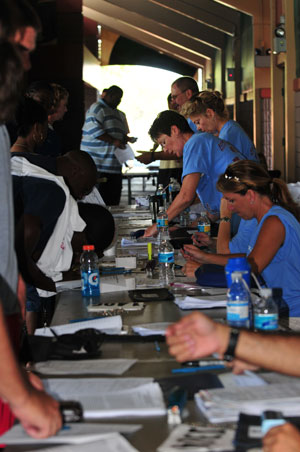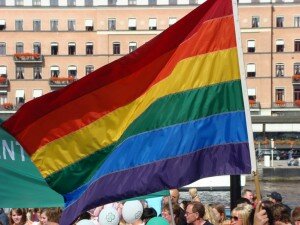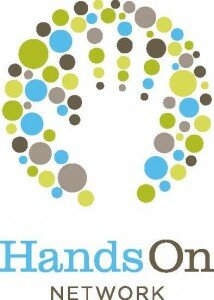Traditionally, many volunteer programs have organized services around the continues-service volunteer-those who serve on boards, in museums, church school teachers, those who’ve lead you youth clubs, etc. Jobs are created for them, training is created to meet their long-term needs, and motivational activities are used to enhance their retention over time. But what about the episodic or short-term volunteer? Here are six steps to developing an episodic volunteer program.
-
The Needs Assessment: A needs assessment for the episodic volunteer program should include but not be
 limited to identifying the current quality and quantity of service by episodic volunteer in the last three to five years and surveys identifying areas in which episodic volunteers may be helpful.
limited to identifying the current quality and quantity of service by episodic volunteer in the last three to five years and surveys identifying areas in which episodic volunteers may be helpful. -
The plan: Establish a plan to accomplish the task. This includes setting an overall goal and smaller objective statements that describe the steps to implement the episodic volunteer program. The episodic planning team should include current continuous-service volunteers, paid staff, former episodic volunteers, and community
members. - Volunteer Roles: The primary task for the planning team is to identify new jobs that can be performed on a short-term basis and/or to redesign traditional volunteer jobs so that they can be more appropriately assigned to the short-term volunteer. The development of the roles of the episodic volunteer includes gathering information from staff and other volunteers about specific tasks that can be accomplished by those giving short-term service. Episodic volunteers need clearly defined parameters for their jobs.
-
Recruitment: Here, we can apply the 4P’s of marketing- product, promotion, price, and placement. First is the one-to-one or in-person method. Studies have reinforced the fact that the majority of people become volunteers “because someone asked them.” The second recruiting technique involves a person asking a group. Telephone
 contact is the third recruiting technique. The fourth method of volunteer recruitment is the mass appeal. This includes such things as flyers, print and media ads, billboards, brochures, window displays, or want ads.
contact is the third recruiting technique. The fourth method of volunteer recruitment is the mass appeal. This includes such things as flyers, print and media ads, billboards, brochures, window displays, or want ads. - Screening: Screening, both continuous and episodic volunteers includes written job descriptions, applications, and interviews. Each organization must decide on the extent of the screening for volunteers. Also, it is good practice to review screening procedures every two years.
- The recruiting team: The recruiting team could ease the burden of work on the volunteer director or program manager. The team can set numerical targets for recruiting, design, the screening process, review job descriptions, and design and carry out advertising and recruiting strategies. Most importantly, the recruiting team must manage its recruiting effort within the constraints of the resources available: It must have a budget.
Tell us in the comments how you plan on implementing short-term volunteers in to your organization?


 Host your own football draft: While you and your community is in the midst of all this competition make a pact to serve others year round. With all the fun you are going to have it will not be hard to recruit people! You can make this happen through making a donation calendar, assigning a bin to be stored in a local area for donations, writing up a schedule to define who will take donations to the food bank each month, etc. Just remember communication is key to any successful team!
Host your own football draft: While you and your community is in the midst of all this competition make a pact to serve others year round. With all the fun you are going to have it will not be hard to recruit people! You can make this happen through making a donation calendar, assigning a bin to be stored in a local area for donations, writing up a schedule to define who will take donations to the food bank each month, etc. Just remember communication is key to any successful team!


 So this June is Pride month, when we celebrate the accomplishments of the LGBT community. I’m someone who works alongside nonprofit professionals. I’m also someone who benefits from the economic empowerment and healthcare services that local nonprofits provide. The fact that I’m a transgender person of color puts me in a demographic more likely to
So this June is Pride month, when we celebrate the accomplishments of the LGBT community. I’m someone who works alongside nonprofit professionals. I’m also someone who benefits from the economic empowerment and healthcare services that local nonprofits provide. The fact that I’m a transgender person of color puts me in a demographic more likely to 
 HandsOn Network is engaged in a focused field investment strategy called Innovation Hubs (iHubs), designed to dramatically accelerate the growth, effectiveness and impact of our network. Through iHubs we are engaging a cohort of our strongest, most progressive market leaders to formulate innovative approaches and pilot best-in-class initiatives with the intent of scaling the most impactful opportunities to benefit the entire network, and ultimately, the communities we serve.
HandsOn Network is engaged in a focused field investment strategy called Innovation Hubs (iHubs), designed to dramatically accelerate the growth, effectiveness and impact of our network. Through iHubs we are engaging a cohort of our strongest, most progressive market leaders to formulate innovative approaches and pilot best-in-class initiatives with the intent of scaling the most impactful opportunities to benefit the entire network, and ultimately, the communities we serve. more than 70,000 nonprofit partners and millions of volunteers.
more than 70,000 nonprofit partners and millions of volunteers.
 s between donors, volunteers and causes. Their innovative concept is to develop an integrated service model that brings together groups of investors and creates unified teams to seed, lead, staff and support projects from concept to evaluation.
s between donors, volunteers and causes. Their innovative concept is to develop an integrated service model that brings together groups of investors and creates unified teams to seed, lead, staff and support projects from concept to evaluation. One of the more provocative iHubs projects comes to us from
One of the more provocative iHubs projects comes to us from  HIV, and Syphilis.
HIV, and Syphilis.
 Give your mom gifts that give back! Whether it’s a necklace, bracelet, or pretty pair of earrings, 20 percent of the proceeds from
Give your mom gifts that give back! Whether it’s a necklace, bracelet, or pretty pair of earrings, 20 percent of the proceeds from 
 Visit a hospitalized veteran or a veteran living in a veteran’s home! Why wouldn’t a veteran appreciate someone taking the time out of their day to come and visit them in the hospital to remind them that they are grateful for their service to our country!
Visit a hospitalized veteran or a veteran living in a veteran’s home! Why wouldn’t a veteran appreciate someone taking the time out of their day to come and visit them in the hospital to remind them that they are grateful for their service to our country!

